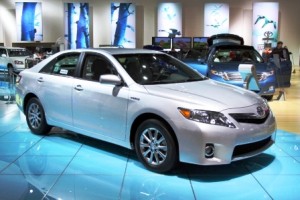The world’s largest auto market is about to catch up with western ones, as both offshore makers and native brands rush to introduce hybrids during the next few years.
The market is expanding elsewhere so it is no surprise that carmakers and component suppliers in the Chinese automotive industry are preparing to triple the number of hybrid offerings, according to the latest research from the Frost & Sullivan auto consultancy.
Only six hybrid models were available in the market at the beginning of last year. However, new models from both native and global makers will see the number increase to at least 19 by 2015.
Native brands are likely to enter the hybrid car market with micro hybrids. Global makers, especially the Japanese who lead in Hybrid technology, are expected to increase their sales with mild and full hybrids.
Toyota Motor Corporation will introduce the Camry hybrid in China around 2011. Native brands such as SAIC Motor, JAC, Dongfeng, Brilliance Auto, and FAW Car all have plans to commercialize hybrid cars in the next two to three years.
Despite clear fuel economy advantages, many potential customers are reluctant to invest in a hybrid due to its higher initial purchase cost. Frost says in such a scenario, the penetration levels will depend greatly on the extent to which the central government leverages sponsorship to private consumers.
Meanwhile, the government has taken regulatory initiatives to reduce CO2 emissions, giving a boost to the market.
The market has received another boost, according to Frost, with the International Energy Agency’s (IEA’s) forecast that the global oil demand will reach 106 million barrels per day in 2030 from 84.5 million barrels per day in 2008. If true and alternate sources are not found, the steady rise in demand for oil will hike the price of oil globally.
“According to the IEA’s latest report, the nominal oil price is projected to escalate to $200 per barrel by 2030, from nearly $100 per barrel in the medium term,” says the analyst of this research. “Rising fuel price in the long term is a key incentive to buy a hybrid, considering that better fuel economy is the primary appeal of hybrids.”
This Frost & Sullivan research is titled: Strategic Analysis of the Chinese Market for Hybrid Cars provides market, legislation, and technology trends as well as market size and competitive landscape. In this research, Frost & Sullivan’s expert examined the micro hybrid, mild hybrid, and full hybrid markets, as well as related technologies and various battery types.

